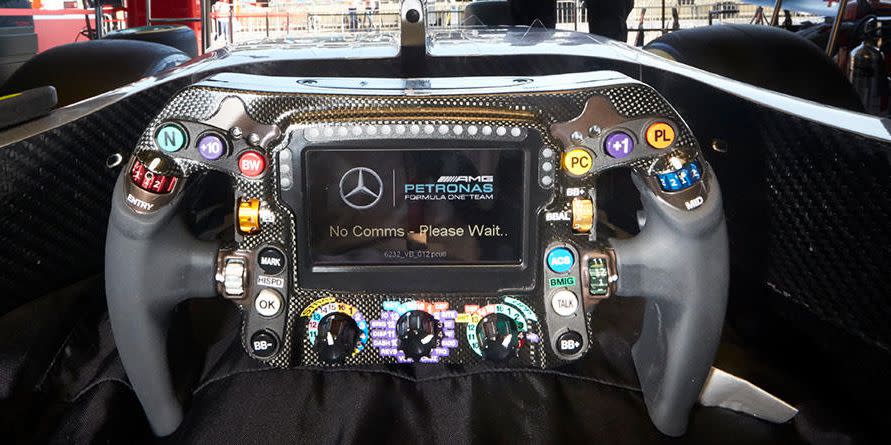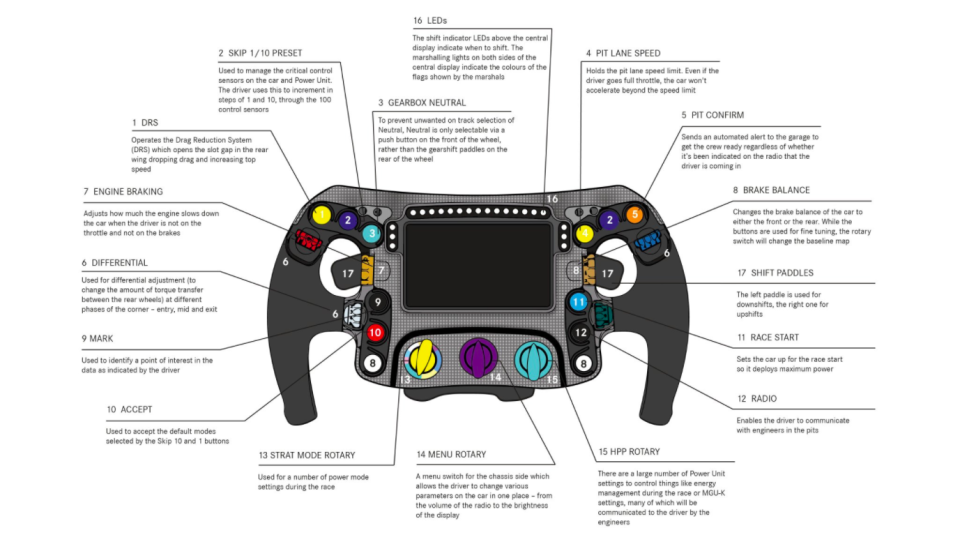Here's What Every Button on a Modern F1 Steering Wheel Does

If you've ever seen a steering wheel from a Formula 1 car before, you'll just how wildly complex they are. Covered in buttons, rotary dials, switches, paddles, lights, and often, a big screen, it's a far cry from the wheel in your Miata. Here's how all of those controls work.
The Mercedes-AMG Petronas F1 team put together a neat graphic (pictured below) in 2018 explaining how all 25 of the interactive controls on the steering wheel work, and what they do. F1 cars are incredibly complicated machines, with tons of adjustability for things like the engine mapping, differential output, engine braking, brake balance, and aero. The steering wheel acts as the central controlling unit for the entire system, with easy access for the driver.

According to Mercedes, one driver will go through three to four wheels each season. Construction for a single wheel takes a team of mechanical designers, electrical designers, and wiring technicians, and about 80 hours of labor to assemble. The buttons are the same type used on aircraft, designed to prevent any accidental presses by the driver. The total cost? Around $60,000 each, according to Maxim. Shown below is Mercedes's 2019 wheel, which uses the same layout as last year's model.

Not every F1 steering wheel is created equal-every team has the freedom to design its own, with different shapes and parts. The Williams F1 team, for example, mounts the screen behind the wheel in the cockpit, making the wheel itself is less complicated and bulky.
Nearly time to press go on @F1 2019! #AusGP 🇦🇺 pic.twitter.com/2iT5h0t1mu
- ROKiT WILLIAMS RACING (@WilliamsRacing) March 12, 2019
Mercedes uploaded a video to its YouTube channel with driver Valtteri Bottas explaining how some of the buttons work, pointing out which ones he thinks are most important.
('You Might Also Like',)


